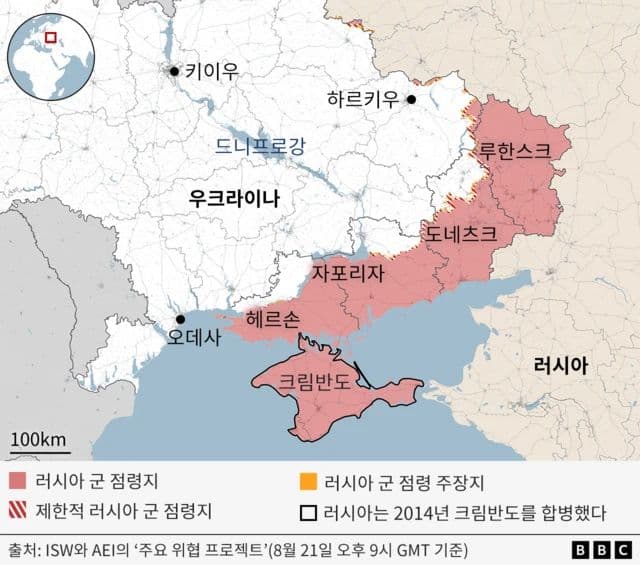Why Are Ukrainian Children Being Evacuated From Donetsk's Frontline Villages?

The Race Against Time: 928 Children Still in Danger
Can you imagine living in a place where drones buzz overhead constantly, searching for targets? That's the reality for families still remaining in Ukraine's eastern Donetsk region right now. On October 24, 2025, Vadym Filashkin, the governor of Donetsk Oblast, announced a mandatory evacuation order for 10 villages along the frontline, citing the approaching Russian forces and escalating drone attacks[web:1][web:5][web:7]. What makes this situation particularly urgent is that approximately 928 children are still living in these danger zones with their families[web:21][web:37]. Filashkin stated that forced evacuation of families with children has begun, emphasizing that Russian troops are getting closer to these settlements every day[web:1]. The evacuation affects areas around Kramatorsk, the largest civilian hub and garrison city still under Ukrainian control in the Donetsk region, located just 20 kilometers from the front line[web:5][web:7].
The situation has deteriorated dramatically over recent weeks. Ukrainian authorities report that Russian forces have significantly increased their use of cheap, first-person-view drones that can target individual civilians and vehicles[web:5][web:7][web:28]. These kamikaze drones hover in the skies looking for targets, creating an atmosphere of constant terror for residents who remain[web:28]. The Kramatorsk city council explained that due to the deterioration of the security situation, mandatory evacuation of families with children has been announced for certain areas within the city community itself[web:5][web:7]. According to UN Human Rights monitors, at least 214 civilians were killed and almost 1,000 injured across Ukraine in September 2025 alone, with 69 percent of casualties occurring near frontline communities in Donetsk and Kherson regions[web:2]. The tragedy becomes even more heartbreaking when you realize that many victims are elderly people who were simply collecting their pensions when attacks struck[web:2].
Russia's Bold Claims: Two More Villages Fall

What exactly is Russia trying to achieve in eastern Ukraine right now? On the same day as the evacuation order, Russia's Defense Ministry announced the capture of two villages in Donetsk Oblast: Zvirove and Novoekonomichne[web:6][web:12][web:37]. These settlements are located on either side of Pokrovsk, a strategically important logistics hub that Russia has been targeting relentlessly[web:12][web:15]. While Ukraine has not officially confirmed the loss of these villages, Ukrainian military reports acknowledge that these areas are where Russian forces are attempting to break through defensive lines[web:12]. The pattern is clear and disturbing: Russia has been announcing village captures on an almost daily basis throughout 2025[web:12][web:25].
But here's where it gets even more concerning for Ukraine's defenders. Russian forces recently reclaimed territory in Russia's Kursk region, which Ukrainian troops had seized in a surprise incursion back in August 2024[web:24][web:27]. Now, emboldened by this success, Moscow is executing a deliberate military strategy to create what President Vladimir Putin calls a buffer zone along the Ukrainian border[web:24][web:27][web:29]. This buffer zone aims to prevent future Ukrainian attacks on Russian territory by occupying a belt of Ukrainian border villages[web:24][web:27]. Russian military operations are focusing on the Sumy region border areas and pushing deeper into Donetsk Oblast simultaneously[web:24][web:29]. According to military analysts, Russian forces are trying to advance toward the Sloviansk-Kramatorsk agglomeration, which represents some of the most fortified Ukrainian positions in the east[web:25]. The stakes couldn't be higher: if Russia captures these key nodes, it would gain control over critical transportation routes and bring Moscow significantly closer to dominating the entire Donetsk region[web:25][web:30].
Life Under Fire: When Home Becomes a War Zone
How do people actually live when war comes to their doorstep? Reuters reporters who traveled to Kramatorsk in early October described a city where residents have learned to recognize the distinctive high-pitched hum of Russian suicide drones[web:28]. One local shop owner pointed casually to the window and said, There, it's about to dive. It's going to fall, moments before an explosion shook the area[web:28]. The journalists witnessed three drone attacks in less than an hour, demonstrating just how dangerous daily life has become for the tens of thousands of people still living in frontline cities[web:28]. At any given moment, thousands of unmanned aerial vehicles patrol over more than 1,000 kilometers of frontlines, making even basic activities like going to the market or collecting mail potentially deadly[web:28].
The human cost continues to mount in ways that statistics can barely capture. On September 9, 2025, a Russian aerial glide bomb attack killed 25 civilians in Yarova, Donetsk region, when it struck near a postal service vehicle where residents were collecting their pensions[web:2]. Most tragically, 21 of those killed were over age 60, highlighting how older persons who are often the last to evacuate bear the heaviest burden[web:2][web:11]. Ukrainian President Volodymyr Zelenskyy has stated that Moscow's persistent strikes on vital infrastructure including railways and energy installations are aimed at instilling disorder and exerting psychological influence on the population[web:8][web:9]. In October 2025, Russia launched large-scale attacks that caused power and water cuts in multiple regions, with some strikes taking out about 60 percent of Ukraine's natural gas production[web:2][web:9]. The winter of 2025-2026 looms as a particularly harsh challenge, with Ukraine expecting to spend 1.9 billion euros on fuel imports to compensate for destroyed energy infrastructure[web:9].
The Impossible Choice: Stay or Go?
Why would anyone choose to stay in such dangerous conditions? This question haunts Ukrainian officials as they struggle to convince residents to evacuate. According to official data from late September 2025, approximately 14,461 children still remain in Donetsk region overall, with forced evacuation continuing in multiple communities[web:26]. In settlements where mandatory evacuation is enforced, 1,163 children from 904 families remain, with most concentrated in the Druzhkivka town area[web:23]. Over the past week of early October, only 186 children from 144 families agreed to evacuate, showing how difficult it is to persuade people to leave their homes[web:23]. The reluctance is understandable: many residents have lived in these communities their entire lives, they fear losing their property to looters, and some simply cannot imagine starting over elsewhere[web:35].
The broader evacuation picture reveals the enormous scale of displacement this war has caused. Almost 1.3 million Donetsk residents have been forced to evacuate since the full-scale invasion began in February 2022, including 197,000 children[web:32]. Currently, about 206,000 civilians remain living in government-controlled areas of the region, with approximately 17,300 people still in active combat zones where no children officially remain[web:26]. International observers note that virtually no day passes without civilian deaths or injuries, especially in frontline communities, confirming this year's disturbing pattern of intense violence[web:2]. Meanwhile, authorities in neighboring regions have also issued evacuation warnings, with some areas completely sealed off since late September, preventing anyone from entering or exiting, including humanitarian workers[web:1]. As winter approaches and Russian forces continue their relentless advance, the window for safe evacuation grows narrower each day. The question facing these 928 children and their families in the 10 newly ordered evacuation zones is not whether they should leave, but whether they will leave before it's too late[web:1][web:37].
Discover More

South Korea's Former President Yoon Declares 8 Billion Won Fortune - Is He Really Broke?
Former President Yoon Seok-yeol declared assets worth nearly 8 billion won despite claims of having no money. His property value surged by 500 million won in just one year, with most assets under his wife Kim Keon-hee's name, sparking heated online debates.

Why Are Thailand and Cambodia Fighting Over an Ancient Temple?
Thailand and Cambodia are locked in a century-old territorial dispute over the sacred Preah Vihear temple. What began as a French colonial mapping error has escalated into armed conflict in 2025, with dozens killed and hundreds of thousands displaced.